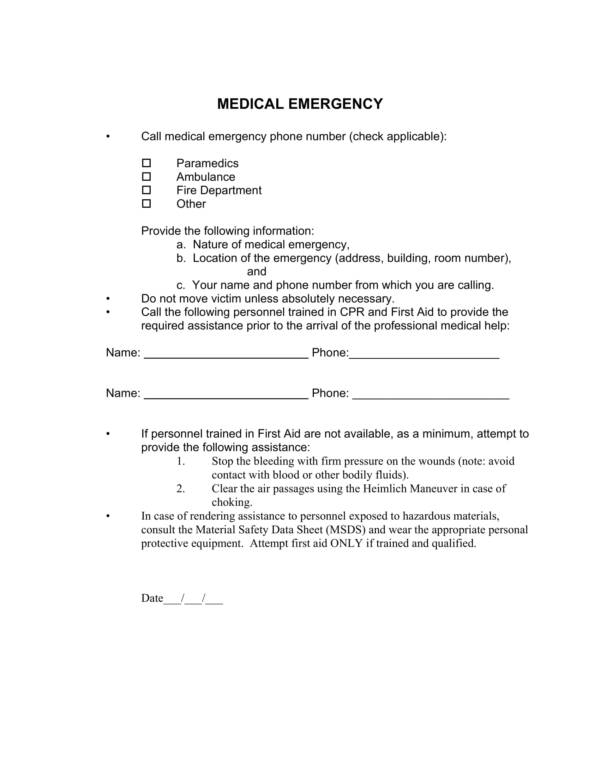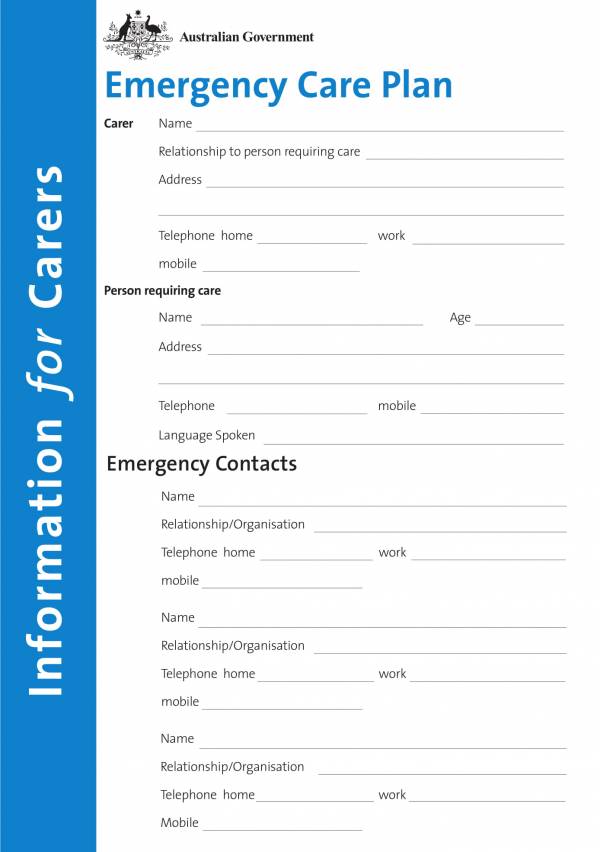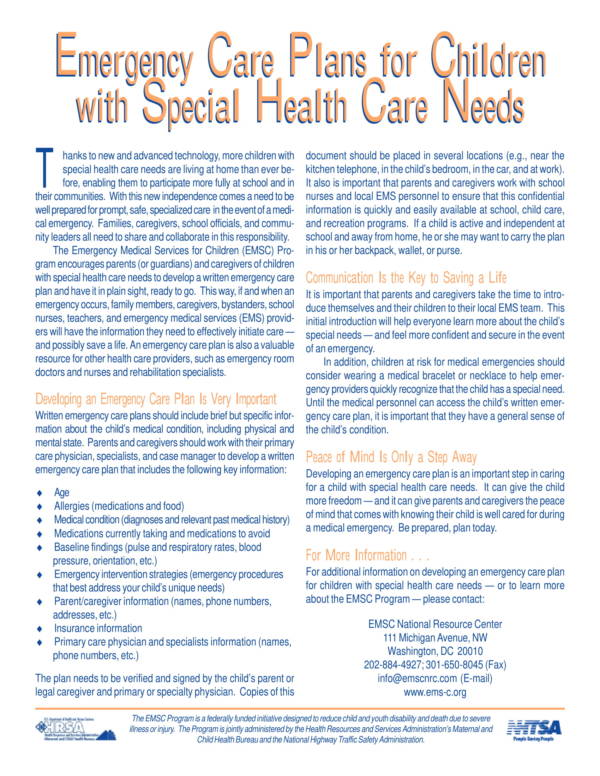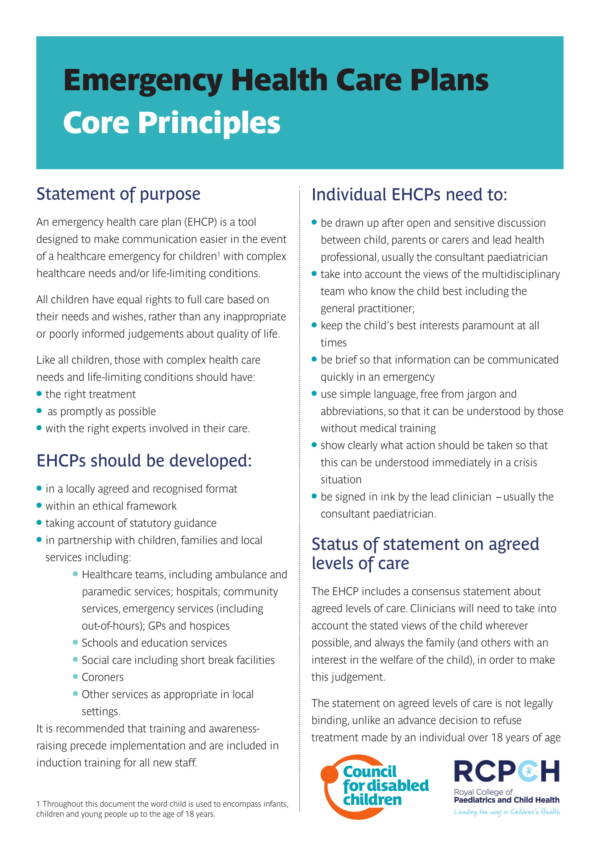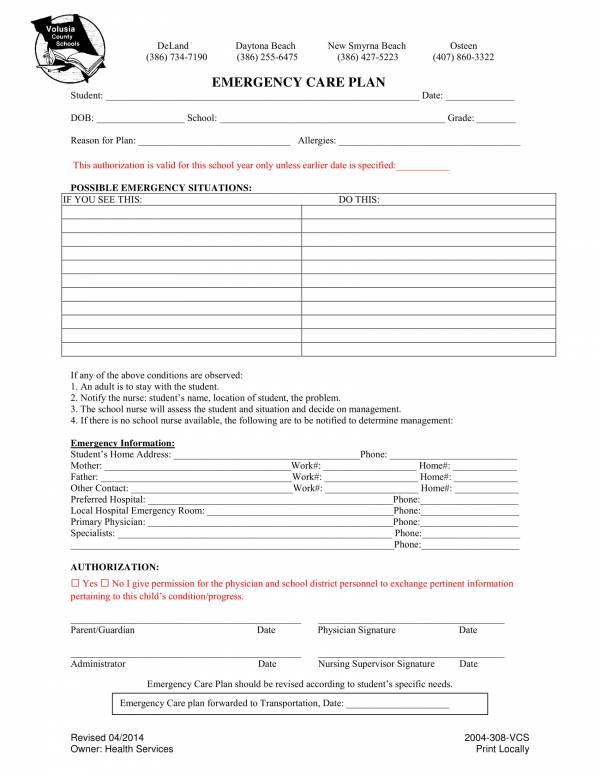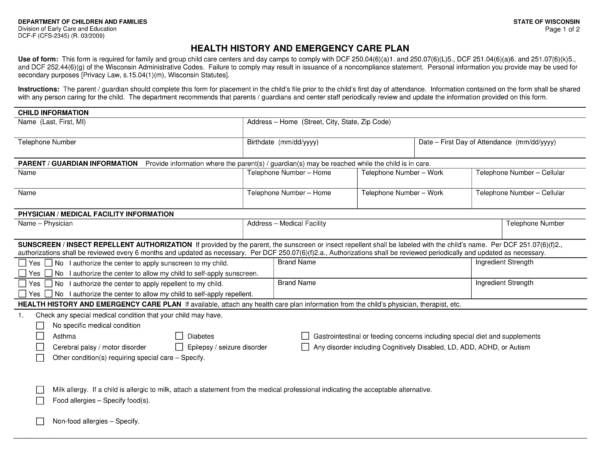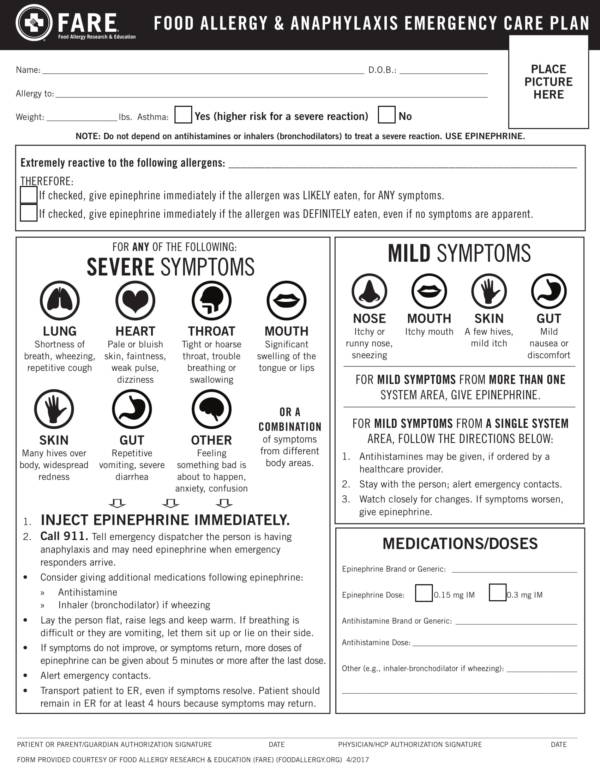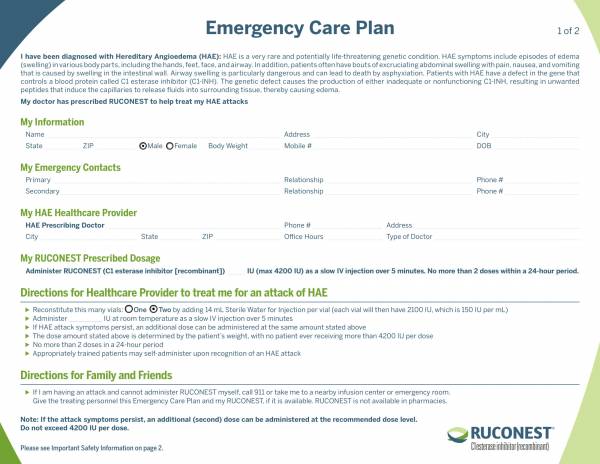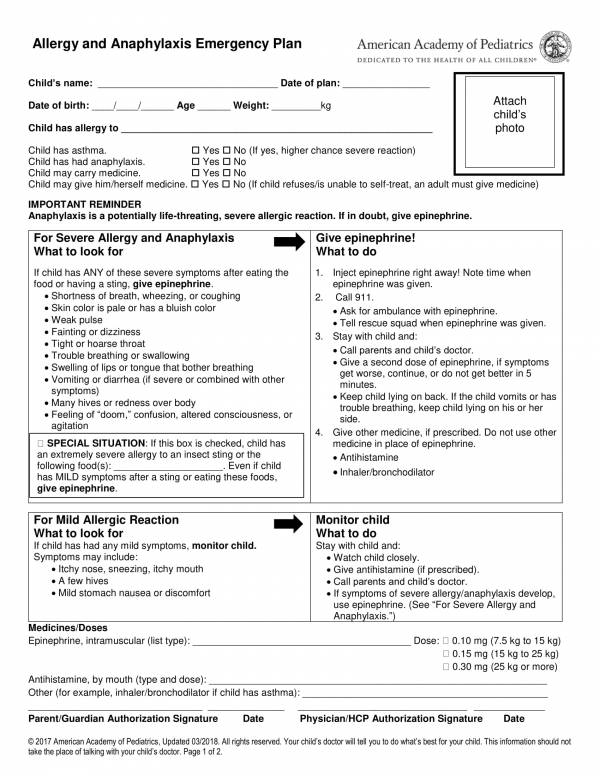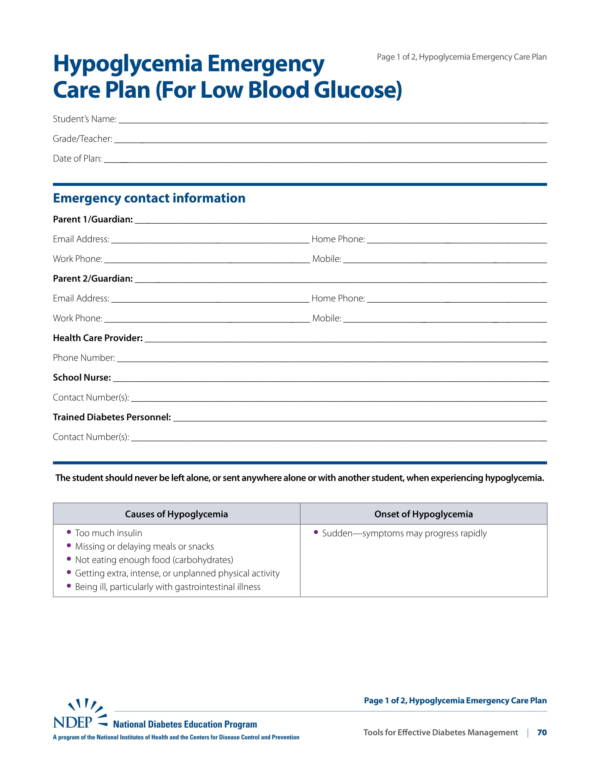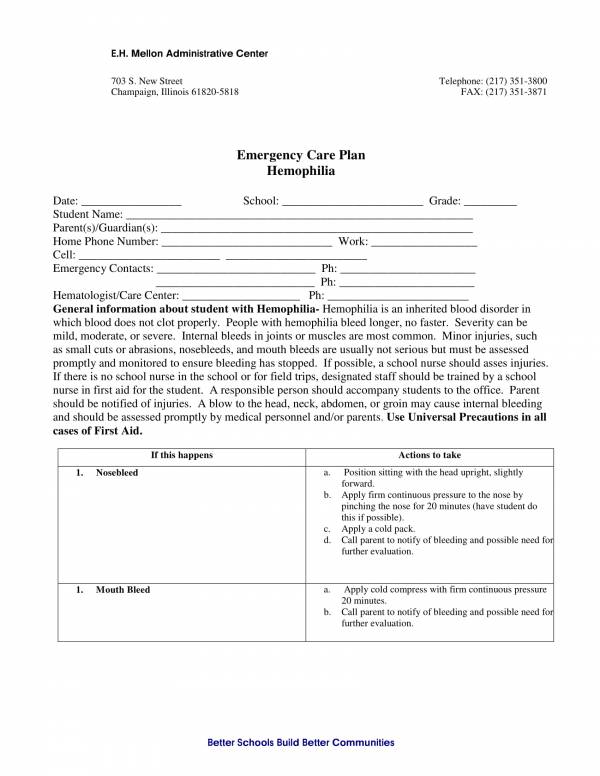Care plans are created for specific situations, such as that of an emergency. Care plans are mostly used in hospitals and other health care facilities that cater to the needs of different kinds of individuals, families or communities. Through the creation and establishment of a care plan, patient care can be properly and clearly communicated to the different members of the medical team.
All care plans are equally important as they are created created with the aim of helping patients improve their overall health. An emergency care plan, however, is one type of care plan that is given much importance and emphasis. In this article, we will learn about emergency care plan, what it is, its uses and the reason why it is important. We have also included emergency care plan templates that you may download and use as reference.
Emergency Care Plan Template
General Emergency Care Plan Template
Emergency Care Plan for Concussions in Sports
Emergency Care Plan for Children With Special Needs
Core Principles of Emergency Care Plans
Emergency Care Plan Form for Schools
What Is an Emergency Care Plan?
Emergency care plans are plans specifically created for handling and taking care of patients during emergency situations. Different medical emergencies call for different emergency care plans. This type of care plan is given importance and emphasis as the care and intervention provided for this plan deals with patients who are between life and death situations, hanging to dear life or those who are severely ill. Quick response, first aid, and immediate action and diagnosis is required in order for this plan to be put to good use. In other words, the plan just serves as a guide on what to do during emergency situations, but the success of this plan greatly depends on how well the responders react to the situation at hand.
Emergency care is given to patients in critical condition before they are admitted and endorsed to a different hospital staff who will continue provide them with the appropriate care that they need. Other uses of an emergency care plan are as follows:
- Emergency care plans are as usual in the ward or private rooms as they are in the emergency rooms. Emergency care plans are prepared and used for patient with severe illnesses or who are always on red alert due to their medical conditions. If an emergency takes place, the patient’s preferences and doctor’s order serves as reference for the medical team to follow.
- An emergency care plan is where you can acquire a consent from the patient or patient’s family whether they should be resuscitated or not.
- Recommendations for patient care on different scenarios in the future can be provided with the use of an emergency care plan. This allows the medical staff to discuss and record the patient’s preferences to the care to be provided to them in the future.
- An emergency care plan helps the medical staff to prepare for the possible emergency scenarios that the patient may experience or undergo. This is a very convenient and effective way to save a patient’s life.
- Emergency care plans are also created and provided to patients who are diagnosed with long term disability, life limiting conditions and those who are at the end of their life. Although there aren’t much that the medical team can do, the goal of the care plan in this situation is no longer to save their life, but to make them feel comfortable and alleviate the pain that they are feeling.
Other related articles you may be interested in are Patient Note Samples and Nursing Care Plan Examples.
What Are the 3 C’s for Handling an Emergency Situation?
Trained emergency response personnel are the people we call when emergency situations arise. But no matter how fast they respond, it may still take sometime before they get to the site of emergency. Even if you are not a trained emergency responder, you can still help save that life and that is through the 3 C’s of handling an emergency situation or what we call as first aid treatment. The 3 C’s stand for check, call and care or compress.
Check
When you found out that an emergency took place, you should never rush to the site as you have seen int he movies or read in books. Why? This is because the place might still be unsafe after the emergency and you might just be one of the casualties instead of the rescuer. Here are some of the things you must do before trying to help in an emergency.
- Check and secure if the area is safe.
- Check if the victim or patient is responsive. This includes checking if they are breathing, and if they have a pulse or not.
- If possible, move the victim or patient to safety
Call
After making an assessment of the whole situation and after checking the condition of the victim or patient, the next important step to do is to call the emergency hotline in your area, such as 911. You will need to provide 911 with your location, the condition of the victim or patient, and specific details of the current situation.
Care/Compress
The third C refers to providing care to the victim or patient while waiting for the arrival of the medical professionals to take care of the patient. At this time, you as the initial responder need to continuously monitor the breathing of the victim or patient, and their overall condition. Compression or cardiopulmonary resuscitation (CPR) may be provided if necessary.
So if ever you are put in a situation where you are the only one who can help, you know the best thing to do and how to do it. You may check out other articles related to plans in general, like Meal Plans Samples & Templates, Sample Action Plans, and Nursing Care Plan Templates.
What Is Triage?
A triage is the process of determine the level of care and patient priority based on their current conditions. A triage is commonly used in large scale emergency situations, when responding to disasters and war. The process allows for patients who are in critical condition to be attended to first by the available doctors ensuring a maximum number of people to be saved.
Color coded triage tags are used to determine the level of care the patient needs. This makes the rescue process well-coordinated, organized and effective. With just colors and words, triage tags provide clear communication among different groups of emergency responders. The commonly used color coding system used in a triage are as follows:
- Red – A red triage tag means that the victim or patient has a critical life-threatening disease or injury. They are also prioritized for transport.
- Yellow – Victims or patient’s with yellow tags also need immediate attention as they have serious injuries, and should transported as soon as possible.
- Green – Green triage tags are give to victims or patient’s who have minor injuries and those with conditions that are not life threatening. Transport for these patient’s are delayed or done after all priority transports are catered.
- Black – When a victim or patient is provided with a black triage tag, this means that they are mortally wounded and cannot be saved. Often, they are dead upon assessment. They are the last group to be transported by the emergency response team.
The use of a triage in responding to emergencies is an effective way of saving lives, which is why it still being used in the present.
Health History and Emergency Care Plan Template
Food Allergy and Anaphylaxis Emergency Care Plan Template
Hereditary Angioedema Emergency Care Plan
Emergency Care Plan for Allergy and Anaphylaxis
Hypoglycemia Emergency Care Plan Template
Emergency Care Plan Template for Hemophilia
Why Use an Emergency Care Plan Template?
The reasons for using emergency care plan templates are as follows:
- Emergency care plan templates provide users with a document that includes all the important information needed for planning and responding to emergency situations. In other words, it contains a complete set of emergency related information that will guide the care providers.
- There are different emergency care plan templates available for different types of emergency.
- You ca find emergency care plan templates online and they are mostly available for free.
- These templates can be used in an actual emergency or as a study material for anyone who finds a use for it.
- Using the template makes is easy to plan for the care provided during emergency situations, allows one to save time and is also very convenient and easy to use.
- Most emergency care plan templates provides a guide or reference to the standards of emergency care.
Emergency care plans and care plans in general are undoubtedly useful and effective. This is one of the many reasons why it is still being used in providing organized and effective care in different care facilities.
We hope that you are able to learn something from this article. If you need care plan templates and other plan templates in general, you may check them out on our website. To name a few are Emergency Action Plan Samples, Sample Health Lesson Plans, and Emergency Response Plan Templates.
Related Posts
FREE 7+ Fashion Business Plan Samples in PDF
FREE 10+ Sprint Planning Samples In MS Word | Google Docs | PDF
FREE 10+ Wedding Planning Samples in MS Word | Apple Pages | Powerpoint | PDF
FREE 9+ Monthly Study Planner Samples in PSD | Illustrator | InDesign | PDF
FREE 9+ Sample Curriculum Planning Templates in PDF | MS Word
FREE 10+ Teacher Development Plan Samples in MS Word | Google Docs | Apple Pages | PDF
FREE 10+ Basketball Practice Plan Samples in PDF
FREE 12+ School Business Plan Samples in PDF | MS Word | Apple Pages | Google Docs
FREE 7+ Client Strategic Plan Samples in PDF | MS Word
FREE 11+ Trucking Business Plan Templates in PDF | MS Word | Google Docs | Pages
FREE 7+ Small Hotel Business Plan Samples PDF | MS Word | Apple Pages | Google Docs
FREE 14+ Bakery Business Plans in MS Word | PDF | Google Docs | Pages
FREE 4+ Yearly Lesson Plan Samples in PDF
FREE 50+ Strategic Planning Samples in Google Docs | Pages | PDF | MS Word
FREE 10+ Construction Project Plan Samples in MS Word | Google Docs | Apple Pages | PDF

